
Knowing the difference between rising damp and penetrating damp is key to tackling the problem and giving you the best chance of getting rid of moisture in the house.
Rising damp and penetrating moisture differ in their causes and where they occur. The former is caused by moisture from the ground being absorbed by the walls of your home, while the latter occurs when water from outside enters your home, usually due to moisture from outside.
There are some telltale signs that can help you distinguish one type of moisture from another, giving you the best chance of reducing the problem. We spoke to the experts and asked them about the difference between rising damp and penetrating damp, plus other important information.
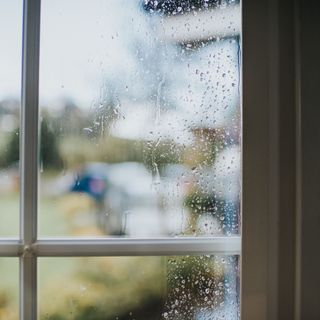
(Image credit: Getty Images)
What is the difference between rising damp and penetrating damp?
‘Rising damp and penetrating damp can be very similar and both can cause damage to the walls in your home, but both have different causes and require different solutions,’ Ryan Calvert, product expert at Hiatt Hardware say.
To explain the difference between rising damp and penetrating damp, the experts break it down as follows:
- Rising damp occurs when moisture from the ground is drawn into the walls of a building by capillary action, which happens in the absence of a DPC (damp-proof layer). DPC is a barrier that primarily prevents water from moving up the wall, thus preventing rising damp.
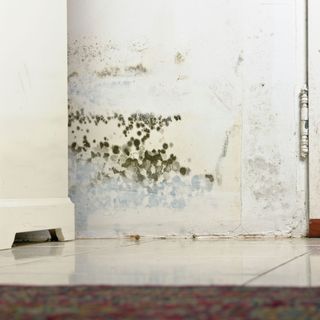
(Image credit: Getty Images)
- Penetrating moisture occurs when water infiltrates from outside to inside a building, usually through walls/roofing. It is caused by external problems such as cracks and holes in brickwork/plaster, leaking gutters, broken roof tiles, poor window seals, poor door seals.
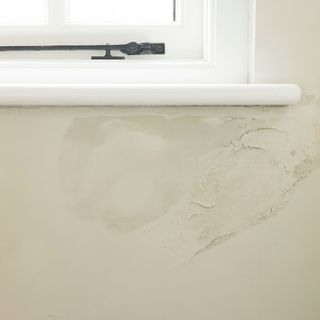
(Image credit: Getty Images)
The water that flows up the walls when rising damp can also contain salts and can be absorbed by other building materials such as wood, plaster and floorboards. Water from penetrating damp contains nothing else.
‘You can tell the difference between the two because rising damp is confined to the lower parts of walls (up to 1 metre), while penetrating damp can be anywhere on walls or ceilings,’ says Gary Jarman, construction expert at Construction store explains.
When do they occur?
Signs of rising damp are rarer than penetrating damp and usually only occur in older buildings. In these cases, DPC may have never been installed or may have worn out due to excessive long-term use. Newer buildings can also suffer from rising damp if the DPC is not installed properly.
“Sometimes the DPC can exceed its lifespan,” says Jess Thomas, director of Central drainage. ‘External ground levels such as driveways or sidewalks that have risen over the years can gradually rise above the applied damp proof course, rendering it ineffective.’
Penetrating damp, on the other hand, can be caused by several things, including:
- Damaged roof covering, such as cracked or missing roof tiles and loose or defective flashing around chimneys and roof joints.
- Clogged or damaged gutters.
- Damaged or clogged windowsill grooves, if not cleaned regularly, can lead to dirt buildup or moss growth.
- Over time, bricks and mortar can become porous and provide an entry point for water to enter a home.
- Cracked plaster can also allow water to enter a building.

(Image credit: Getty Images)
How to tell the difference
Due to their different causes, there are several telltale signs that will help you distinguish one type from another.
As Jess summarizes, ‘rising damp can often be mistaken for condensation, but this will usually only occur on the ground floor of a building, usually no higher than five feet above a wall. By comparison, penetrating damp can occur at any level in a building and is usually caused by external problems such as poor drainage or porous building materials.’
What can you do about it?
Knowing what kind of fluid you have is the first step to tackling the problem. Nasty treat rising dampa moisture barrier will have to be installed by a professional. We recommend that you research local services to get an idea of how much this will cost before making any commitments. It is also important to improve outdoor drainage to prevent future problems.
‘After a damp proof course has been applied, the affected wall should dry out and any salt-contaminated walls should be re-plastered with a compatible plaster,’ says Jess.
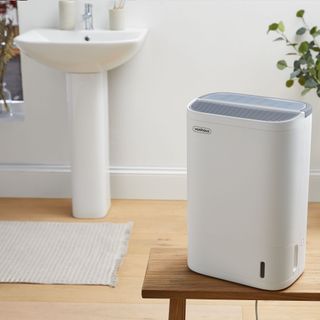
(Image credit: Vonhaus)
To restore penetrating damp, damaged brickwork, roof tiles, tiles or gutters must be repaired. ‘All windows and doors need to be resealed, as well as external cracks,’ says Gary from Building Shop. ‘It is also important to ensure effective ventilation to help dry out affected areas.’
Use one of the best dehumidifiers to lower the humidity in your home and prevent condensation levels from rising. This will make a big difference in reducing damp penetration into the property.
Our current favorite dehumidifiers
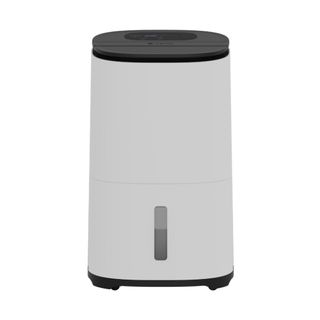
Meaco Arete® Two Dehumidifier, 12l, White
The Meaco Arete Two currently sits in the ‘best overall’ spot in our dehumidifier buying guide and comes highly recommended. It is a dehumidifier and air purifier in one and is said to be the ultimate weapon against moisture penetrating your home. Available in multiple sizes and offers built-in HEPA air purifiers.
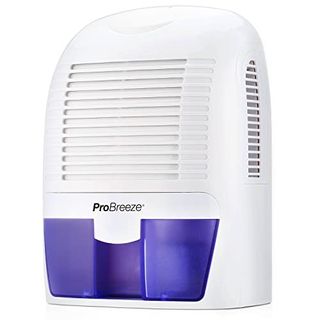
Pro Breeze 1500 ml portable dehumidifier
If you want something that will reduce condensation levels in your home, but don’t want to fork out for a fancy appliance, the Pro Breeze Portable Dehumidifier is a good choice. It runs super quietly and has a compact shape so you can place it in any room.
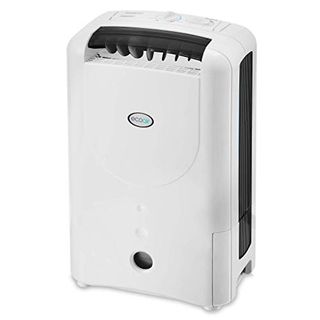
Ecoair Dd1 Simple Mk3 black desiccant dehumidifier
Do you feel the cold this winter? A desiccant dryer makes rooms feel warmer while removing excess moisture from the air. We recommend the Ecoair Dd1, which made quick work of drying laundry in our review. It is ideal for garages, basements and unheated rooms.
Frequently asked questions
Can you sell a house with penetrating damp?
Yes, you can sell a house with penetrating damp, but the problem must be disclosed to potential buyers. Keep in mind that moisture problems can reduce the value of your home.
“While you can sell a home with penetrating damp, leaving it untreated can put off potential buyers and reduce the value of your home by around 10%,” says Ryan of Hiatt Hardware.
‘Before putting a house on the market, it is worth considering whether the cost of repairing the damp is more or less cost-effective than losing 10% of the property’s value.’